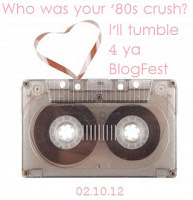Billed as The Bachelor (TV show) meets The Hunger Games, The Selection has a daring premise and I read some reviews to see if held up to its premise. At the very top of the reviews listed for The Selection on Goodreads, there is a scathing 1 star review.
Now, negative reviews don't phase me and won't stop me from reading a book (unless there is a large number of them in overwhelming agreement). Negative reviews are just part and parcel of the subjectivity of art, just like biased gushing reviews from family/friends, and those don't bother me either. I can usually pick out the reviews that avoid either extreme and these provide the best source of info for me.
But a scathing 1 star review is a sad thing for a debut author to see at the VERY TOP of the reviews listed. Does it honestly deserve to be placed at the top of the list? This is what Goodreads says about how they sort reviews:
The default sorting algorithm on Goodreads uses a variety of factors to determine the most interesting reviews. The recipe for our special sauce is a closely guarded trade secret, but the ingredients are: length of the review, number of people who liked it, recency of the review, popularity of the reviewer (i.e. number of people who have liked reviews by that person across all books).Uh oh. Popularity of the reviewer? We live in a world where people with snark and sarcasm garner attention (even if it's negative attention). Not always, of course there are exceptions. But more often than not, it's the extreme "over-the-top" reviews that gain popularity (e.g. "likes") simply because they are entertaining to read, not because they provide helpful advice to other readers looking for input.
It's a free world (web), but it's also a messy one. Ranking is always a controversial area, but there's an even messier side to this controversy. The reviewer in question has added a little footnote to the bottom her review:
Some pretty interesting developments occurred. Please check message #270 on this post if you're interested.Message #270 contains a snapshot of a supposed Twitter conversation between the author of The Selection and her agent. There is no way to verify if this is an actual conversation (I suppose Twitter experts might be able to figure it out). Because this Twitter conversation is not verifiable, I'm trying to tread very carefully here.
But if it WERE verifiable, um... what do you guys think??? I understand how the author and agent feel, and I don't have a problem with what they allegedly did ("liking" positive reviews of the book, trying to get positive reviews to outrank the top-listed negative one), but I wonder if they should have been chatting about it publicly on Twitter. However, the author wasn't protesting the bad review, just the PLACEMENT of it and its popularity due to the controversy it had raised.
 |
| Join us! |















